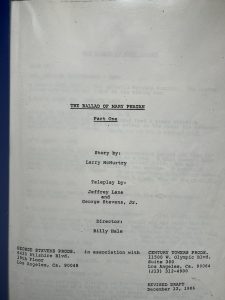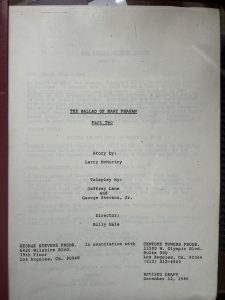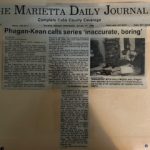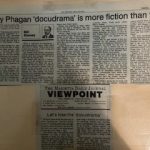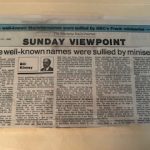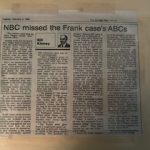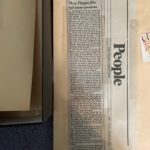Word Count: 4944 Words, Reading Time: 17 Minutes
Mary Frances Phagan Kean
INDEX
A:
A
ADL, Anti-Defamation League
Alabama, 10-12, 15, 51.
Albers, Amy: Librarian Switzer Library
Albertson Brothers, grocery store, 91.
Alexander, Henry, defense lawyer, 151-152.
Alexander, Miles, lawyer Kilpatrick & Cody, 293.
11 Alive News
Alpin, Elaine Marie
Ambulance Service, Greenberg & Bond, 225.
American Jewish Committee, 237; Atlanta Chapter, 264, 270, 279, 281, 304, 309, 313; see also Frank,
Sherry; Grainick, Bill.
Anderson, W.F., Police officer, 198.
Andrews, Dr. Elaine B: Historian
Anti-Defamation League, 236-237, 271; see also Perimutter, Nathan; Schary, Dave; Atlanta Chapter, 236,
247, 270-272, 279, 281, 287, 304, 309, 313; see also Cantor, Betty; Lewengrub, Stuart; Schwartz, Dale; Wittenstein, Charles.
Anti-Semitism, 24, 42, 61, 209, 299, 312; Anti-Defamation League, 236-237, Dreyfus affair, 142, toward
Frank, 61, 264, 266, 314; alleged prejudice of jurors, 150, after trial, 156-157; Slaton, 175, Watson, 160, 221, 227.
April 26, 1913, xii, 2, 17, 23, 53, 55, 59, 67-69, 71, 85, 89-90, 110-111, 113, 138, 170, 176, 183, 185, 190,
197, 202, 239, 305, 314; see also Confederate Memorial Day.
April 27, 1913, 3, 18-19, 24, 73, 75, 129, 152, 185, 201.
April 28, 1913, 52, 57, 82.
Appeals, 1913, 1914, 1915
Arnold, Benedict, 227.
Arnold, Reuben R., defense counsel, 25, 66, 141-142, 145, 163, 277, 288, 296, Public statement after trial, 149-150.
Atkinson, Justice Samuel C., 287.
Asher, S.L.; testimony of, 143.
Athens, Georgia, 109, 126.
Atlanta, 1, 4-5, 12, 14, 21, 33, 39, 42-45, 111, 115, 226, 243, 256, 258, 302; Archives, 9, 239, 267, 289; Christian Council of Metropolitan Atlanta, 282-283; City Directory, 26-27, 163; Courtroom, 65;
Detectives, 21, 31,60; feelings in Atlanta, 61, 156-157, 173; Jewish Community Center, 261-165,
267, 274, 303; Ku Klux Klan, 234; Lynching, 222, 225; Mob, 171-175, 208-209; Murder Notes, 19, 181, 195-196, Race Riot, 3; Reference to Frank, 116-117, 139, 184, 272; Mrs. Frank,
230; working conditions, 15, 51.
Atlanta Black-Jewish Coalition, 272.
Atlanta Constitution: quoted on defense lawyers, 66; quoted on J.W. Coleman, 145; quoted on Fannie Phagan Coleman, 146; quoted on Conley, 101-102; quoted on alleged letters written by Conley, 153; Leo Frank, 214-215; Georgia Board of Pardons and Paroles, 281-282, 302, 308; Ku Klux Klan, 298-299; Little Mary Phagan, 278-279; Night Witch, 239; Celestine Sibley articles, 240-241; Governor Slaton, 166.
Ashford, H.
Atlanta History Center
Atlanta Jewish Committee
Atlanta Jewish Federation, 264, 270, 279, 304, 309; see also Cohen, Gerald.
Atlanta Journal: quoted on defense lawyers, 66; quoted on Fannie Phagan Coleman, 68; quoted on
editorially for new trial for Frank, 157-159; Georgia Board of Pardons and Paroles, 281-282, 302,
309; Ku Klux Klan, 298-299; quoted on hair of little Mary Phagan, 151; quoted on little Mary Phagan, 278, 300; quoted on Ollie Mae Phagan, 68-69; quoted on Walter Smith, 154-156.
Atlanta Georgian: quoted on O.B. Keeler, 101, 228-233; quoted on murder suspects, 52-53; new trial,159.
Atlanta Streets: Alabama Street, 92, 125-126, 129; Asby Street, 36, 225; Atlanta Street, 13; Bankhead Avenue, 36; Broad Street, 129; Butler Street, 33; Davis Street, 99; East Georgia Avenue, 117; Forsyth Street, 15, 18, 76, 90-92, 99-100, 120-121, 125-126, 129, 171, 183, 191, 200; Georgia Avenue, 125-126, 129; Hunter Street, 33, 65, 120, 126, 171; Jefferson Street, 29; Kings Highway, 209; Lindsey Street, 13, 22, 68, 105, 146; Marietta Street, 36, 76, 200, 225; Mitchell Street, 91, 99-100, 130, 134; Nelson Street, 90-92, 100, 183, 191; Peachtree Road, 209; Peachtree Street, 261, 294; Peters Street, 99; Primrose Street Southwest, 33; Pryor Street, 65, 131, 134; South
Gordon Street, 249; Washington Street, 126; Whitehall Street, 125-126, 251.
Atlanta Police Department
Augusta Chronicle Herald: quoted on statement of Judge Randall Evans Jr., 287-290.
Autopsy Report
Autrey, B., pallbearer, 20.
B:
“Ballad of Mary Phagan, The,” 6, 37, 41, 48-50, 226.
Baltimore Sun, 167.
Barnes, Roy, Former Governor
Barrett, R.P., 57, 89, 102, 106, 188-189, 198, 217-218.
Basshart, C.J., juror, 66.
Beavers, Chief, 135-136, 189.
Beck, George, Georgia Supreme Court Justice, 151, 287.
Beck & Gregg Hardware Company, 106.
Becker, H.F., 152, 197, 207.
Benjamin, Judah F., 143.
Benjamin, Sol
Benton, Frances "Fannie" (Phagan Coleman), 10.
Benton, Nannie, 11.
Benton, Rell, 11.
Bellevue Hospital Medical College, 165.
Berkshire Hills Sanitorium, 162, 164, see also Judge Leonard Strickland Roan.
Bernstein, Matthew H.
Big Bethel AME Church
Big Rock Jail, 33, see also The Tower.
Bijou Theater, 16, 18.
Bishop, A. A.
Black, John R., city policeman, 56, 76, 82-84, 130-131, 135, 137-138; testimony of, 78-80 Black, W.J., funeral home, 225.
Blackstone, Thomas
Beschloss, Michael
Billboard
Bitemarks
Bloody Fingerprints
Bloomfields Mortuary, 3, 134.
Blue Ridge, Georgia, 48, 225.
B'nai B'rith
Bowden, Henry, 62, 208-209, 216.
Boylston, Albert
Bowman, H.W., Brigadier General, 46-47.
Bradley, Terrence
Brent, T.Y.: testimony of 142-143.
Bremen Museum
Bricker, Lutter Ottebein, 61.
Brief of Evidence, 9, 50.
Brown, Joseph M., Governor of Georgia, 2, 165, 169, 172, 174; see also Marietta Delegation Brown, Wallace E., 162, 165.
Brown, Mrs. Wallace E., 163.Burdette Earle, 122.
Brown, Jason Robert
Brown, Joseph Mackey
Brown, Tom Watson
Brown, Yellow Jacket
Brumby, Bolan B.
Brumby, Jim
Burke, Superintendent of Milledgeville Prison, 222.
Burns, William, 152-153, 219.
Burns Detective Agency, 156, 160.
Burton, Emmett
Burton, Luther
Busch, Francis X.: Guilty or Not Guilty, 239
Butler, Gloria
Butler, Ralph, pallbearer, 20.
C:
Campbell, Wade, 108, 115, 118; testimony of, 106.
Campbell, T. J.
Canadian Livent, Inc.
Canton, Georgia, 225, 244.
Cantor, Betty, 238; see also Atlanta Chapter of Anti-Defamation League.
Capitalist, 25-26, 227.
Carbine, Bill, reporter for Marietta Daily Journal, 297.
Carson, E.M., testimony of, 12.
Carson, John, 37, 48-50, 226; see also The Ballad of Mary Phagan.
Carson, Rebecca: testimony of, 112.
Carr, Chris: Attorney General Georgia
Carst, Maie
Carter, Annie Maud, 152-153, 195-196, 207, 219, 279; see also Conley, James "Jim".
Carter, Joe
Cato, Myrtle
Casey, Pat, photographer Nashville Tennessean, 298.
CBS: Dan Rather, 302.
Censorship
Census Report: 1910, 1930
Chambers, Phillip, 198, 219.
Charleston, South Carolina, 1, 4, 6, 11.
Chesshire, Skip, Metro Marietta Kiwanis
Chicago, Illinois, 4, 39-40, 227, 236.
Clark, Emma (Freeman), 97, 102, 115, 122-123, 183, 187, 191-192; testimony of, 106.
Clark Woodenware Company, 133.
Clarke, Edward Y., 235; see also Ku Klux Klan.
Clay, Chuck
Clay, Herbert, 165, 167.
Clayton, Cassandra, reporter for WXIA, 246.
Clofine, Michael D.
Cobb County, Georgia, 10, 15, 165, 208, 222, 225-226, 23—232 [sic], 243, 277, 304, 324; Courthouse, 233; Democratic Executive Committee, 168, Cobb Energy Performing Center
Coffee, General, 10.
Cohen, John S.
Cohen, Gerald, 264; see also Atlanta Jewish Federation.
Cold Case Lynching Law
Cohn, Norman
Coleman, Billie, 32.
Coleman, Mrs. Frances "Fannie" (Benton, Phagan), mother, 2-3, 12-13, 16-18, 24, 32-37, 63; marriage to J.W. Coleman, 14; return to Georgia, 11, 51; funeral of little Mary, 20-23, testimony of, 23, 67-68; vow of silence, 7, 31, 68; quoted on statement to Atlanta Constitution reporter after verdict, 146; suit against National Pencil Company, 237, Letter to Tom Watson
Coleman, J.W., 32, 36; funeral of little Mary, 22; inquest 63; quoted on statement to Atlanta Constitution reporter after verdict, 145, Letter to Tom Watson
Collier’s Weekly, 157, 239.
Confederate Memorial Day, xii, 2, 17, 36, 59, 86, 200, 249-251.
Conley, James "Jim", 42, 53, 58, 146, 149, 164, 232, 271; affidavits, 60, 181-183, 190-197, 218-219; allegations of
immoral behavior of Frank, 115, 150-151; alleged confessions, 153-154, 279-281, 238; alleged letters to Annie Maud Carter, 153; bloody fingerprints, 220; body to basement, 63, 67, 185-187,289; excrement, 169, 185; Georgia Board of Pardons and Paroles, 302-303, 305, 307, 309, 312; Alonzo Mann, 244, 246, 248-256, 264, 285-286; William Joshua Phagan, Jr., 28-32; reputation,112-114, 138-139, 141-142, 202; Slaton, 179, 216; testimony of, 89-101, 104; reference to by witnesses, 88; Watson, 218-219.
Conder, Sherry, librarian Georgia State and Archives, 267 Cowart, Merritt, reporter for Marietta Daily Journal, 297. Connolly, C.P.: The Truth About the Frank Case, 239
Conviction Integrity Unit (CIU)
Coroner's Inquest
COVID-19
Cowsert, Bill: Chairman, Senate Committee
Cox, Kathy: Dean of Mercer Law School
Coylar, A.S.
Craven, Roy.
Creen, William, 213.
Cross, 120.
Curtis Drug Store, 91.
D:
Dadie, Jane, 163.
Daniels, George
Dalton, C.B., 100, 113, 115, 138-139, 142; testimony of, 88-89.
Darley, N.V., 72, 82, 92-93, 115, 118-119, 129, 132-134, 180, 198.
Davis, Mary
Davis, Dr. Marni
Deal, Nathan, Governor of Georgia
Deaton, Stan: Historian
Defendents Exhibit 48
Defense Team Theory
Defore, H.M.
Deham, Harry, 102, 121, 123-125, 127, 201; testimony of, 107.
Dewberry, Glen
Dictograph
Dinnerstein, Leonard: The Leo Frank Case, 239.
Dobbs, E. P., Marietta Mayor
Dobbs, L.S., sergeant of police, 24, 56, 198; testimony of, 73-75.
Dolezal, Greg, Vice-Chairman Senate Committee
Donehoo, Paul
Donegan, Mrs. C.B.
Dorsey, Hugh M., 25, 108, 142, 146, 151, 155, 186, 216, 296; Chief Prosecutor, 66, 75, 80, 102, 140;
County Solicitor, 2, 59-62, indictment against Frank, 64; later career, 238; motion for new trial,150, 160; Slaton, 169; summation of jury, 143-144.
Dorsey, Jasper
Dorsey, John Tucker
Dreyfus, Alfred, 142.
Dukehart, Bernie, 246-247.
Duncan, Geoff: Lt. Governor Georgia
Dunphy, Joan
E:
Eagan, John, 209.
East Cobb Neighbor: quoted, 263-265.
East Point, Georgia, 12, 21.
Elevator Shaft
Eliott, Joel
Ellis, Bob: Fulton County Commissioner
Epps, George Jr, 151, 200.
Epstein, Jeffrey
Esteves, Jason
Eubanks, 118.
Europe, 157, 227; see also Frank, Leo; Watson, Tom.
Evans, Beverly, Georgia Supreme Court Justice, 287.
Evans, Judge Randall Jr., 291, 296-297; quoted from Augusta Chronicle Herald, 287-290; quoted, 299 Exposition. Cotton Mills, 36.
Excrement
Exodus of Jews
Exoneration
F:
Fair Trial
February, G.C.
Felder, Colonel Thomas B
Ferguson, Helen, 18, 58, 105-106; testimony of, 86
Fields, Dr. Edward, 297; see also Ku Klux Klan
Fish, Georgia Supreme Court Justice, 151, 287
Flagpole
Fletcher, Norman, Former Court Chief Justice
Florence, Alabama, 10-11
Flournoy, Bob, Mayor of Marietta, 297
Flowers, R. Barri
Foote, Walter W., 209
Formby, Nina, 151
Forrest, N.B., General, 234-235; see also Ku Klux Klan
Forsyth County, Georgia, 316; see also Ku Klux Klan
Frank, Charles, brother, 214-215
Frank, Leo, 3, 10, 23, 25, 27-31, 35, 45, 52, 67-68, 75, 82, 86, 88, 102-104, 106-109, 112, 114-115, 144-146, 149, 154-155, 163, 166-169, 172, 176, 189, 197, 200-201, 206, 210, 216, 220, 231-232, 238-239, 243, 258, 260-261, 294-295; Anti-Defamation League, 236-237, 287; behavior, 56-57, 76-
78, 80-81, 84-85, 109-110, 177, 179, 182; Jim Conley, 89-101, 182-183, 185-188; affidavits of Conley, 190, 195; Coroner’s Inquest, 59-60, 199; change of venue, 25, 173; dying wish, 228, 230; indictment, 62-64; Jewish, 24-25, 61, 142-143, 159, 175, 227, 262-265; Judicial, 150-152, 156, 160-162, 203-205, 207-208, 221, 288-290; Ku Klux Klan, 233-235, 287, 297-298; Newt Lee, 53- 58, 69-73, 79-80, 83-84, 177-178, lynching of, 9, 222-226; Alonzo Mann, 244-257; Milledgeville Prison, 27, 170, 211-215, 233, 277, 304, 314; Morgue, 77, 79, 178; Posthumous
Pardon, 269-271, 274-283, 286, 290, 296-297, 300-303, 309-310, 311-316; pre-trial statement,105; sentence of, 148; Slaton’s Commutation, 171-208; trial of, 65-147; X-rays of teeth, 59, 87, keys
Frank, Lucille (Selig), wife, 24, 63-65, 68-69, 78, 86, 110, 117, 125, 130, 147, 179, 214, 222, 230, 237, 245, Obituary
Frank, Moses, uncle, 111, 129, 139
Frank, Mrs. Rhea, mother, 68, 213-214; testimony of, 110
Frank, Sherry, 264, 281, 292; see also American Jewish Committee
Freeman, Emma Clark
Freshman, Clark, thesis
Frey’s Gin Mill, 224, 233
Frey, W. J.
Foster, J.Z.
Freeman, Negro prisoner, 153
Fuller, J.D., Reverend, 10
Freshman, Clark
Fulton Bag Mills, 294
Fulton County Board of Ethics
Fulton County, Georgia, 36, 66, 208, 288
Fulton County Opens Records Request
Fulton Tower
Fuss, Julia: testimony of, 114
G:
Gann, Gordon
Gantt, J.M., 54-55, 57, 63, 70-71, 83, 85, 128-129, 177; testimony of, 80-81.
Georgia, 4, 7-8, 11-13, 16, 21, 25, 27, 36, 39, 115, 149, 156-157, 162, 165-167, 170-172, 175, 202, 210, 213, 227-278, 236, 299-300, 304, 306, 309, 315
Gantt, W. N.
Generational Trauma
Georgia Appeals Court
Georgia Board of Pardons and Paroles, 246, 268, 270, 273-275, 278-279, 281-282, 286, 290-294, 296-297, 299-303; decision, 304-307, 309, 311-316; see also Howell, Mobley; Moore, Silas; Morris, James; Reese, Mamie; Snow, Wayne Jr., Wing, Mike.
Georgia Division, Sons of Confederate Veterans
Georgia Historical Society
Georgia National Guard, 158.
Georgia Prison Commission, 162-165, 204-205, 207, 211.
Georgia State Capital, 2, 278, 302, 313.
Georgia State House, 273.
Georgia State Senate, 273-278.
Georgia State Legislatures
Georgia State University, 239, 257-258.
Georgia Superior Court, 156, 289, 304.
Georgia Supreme Court, 151, 156, 161, 173, 175, 203-204, 207, 276, 280, 288-290, 295, 306; cases: Euband V Barber, 290; Grubb V Bullock, 290.
Georgians, 2, 39, 160, 167-168, 272, 299, 314.
Gershon, A.
Gheesling, W.H., funeral director, 24, 78, 87, 131.
Gilroy, Brent, reporter for Marietta Daily Journal, 281.
Giuliani, Rudy
Glover, James Bolan
Golden, Harry: A Little Girl Is Dead, 61, 239.
Goldman, David
Goldring
Goldfarb Library, 265.
Goldstein, Max
Gooch, Steve
Gordon, George, 58, 139.
Gottheimer, Harry, 120.
Grady Hospital, 143.
Graham, E.K., 122, 139.
Grand Jury
Grand Theater, 16.
Grant Building, 26-27.
Graves, 108-109.
Greene, Marjorie Taylor: Georgia Representative
Greene, Ward
Greenblatt, Jonathan, ADL
Griffin, Georgia, 47.
Griffin, Maggie
Griffith, D.W.: The Birth of a Nation, 235; see also Ku Klux Klan.
Grutatowsky, Jacob D.
Guthman, Albert A.
H:
Haas, Herbert, defense lawyer, 57, 66, 79-80, 83, 111, 277, 288.
Haas, Leonard, defense lawyer, 277, 288.
Hall, Corinthia, 97, 102, 115, 122-123, 183, 191-192; testimony of, 106.
Hall, Mattie, 115, 120-123; testimony of, 106.
Hall, Hattie
Haney, Lawrence
"Hang the Jew"
Hardy, Horace
Harris, Dr. F.H., 177, 188, 198, 207, 210, 213, 217-219; testimony of, 86-87
Harris, Joseph Frank, Governor of Georgia, 273, 282, 297.
Harris, Nathaniel, Governor of Georgia, 157, 168, 234.
Hart, John J., 208.
Hastings, Andrea
Hatchett, Bo
HB 1555
Hearst, William Randolph
Henry, 1, 4, 42.
Henslee, A.H., juror, 66, 150.
Henson, Allen Lumpkin: Confessions of a Criminal Lawyer, 154, 239.
Hertzberg, Steven
Hicks, George
Higdon, J.F., juror, 66.
High Park, Massachusetts, 116.
Hill, Judge Ben, 15, 288.
Hill, Georgia Supreme Court Justice, 287.
Hill, Robert A.
Historical Evidence
Historical Marker
Hixon, Annie
Hix, Grace
Hoaxes
Hollis, W.T., 105.
Howard, Clark
Howard, Paul, Fulton County District Attorney
Howell, Dewey
Holloway, E.F., 93, 100, 115, 117, 121, 180; testimony of, 102-103.
Holmes, Justice Oliver Wendell, 161, 169, 213; see also United States Supreme Court
Holocaust, 272.
Hood, J.
Hooper, Frank Arthur, assistant prosecutor, 66-67.
Hopkins, Daisy, 88, 114, 139; testimony of, 113.
Hopkins, Stiles, defense lawyer, 66.
Howard, William Schley
Howell, Mobley, 246, 273, 278, 300-301, 307; see also Georgia Board of Pardons and Paroles
Howell, Robert E. Lee, 227.
Hughes, Justice Charles Evans, 161; see also United States Supreme Court.
Hurt, Dr. J.W.; 219; testimony of 86-87.
I:
Illinois, 235
Indiana, 235
Irvington, Indiana, 236 Irby, 115, 117
Israel Today, 274.
J:
Jacobs, Mr. & Mrs., 46-47.
Jacobs, Robert, 46.
Jackson, Irene
Jefferson, Thomas, 171.
Jeffersonian, The, 159, 208, 221, 227, 289; see also Watson, Tom.
Jeffries, W.N., juror, 66.
Jewish, 44-46, 52, 99; Community, 260, 288-289, 315, 1921 Jewish Year Book
Jewish American Society for Historic Preservation
Jewish American Revisionists
Johening, M., juror, 66, 150.
Jones II, Harold
Jones, Ivy
Jones, Irene
Jones, Richard, Colonel 62nd Troop Carrier, 47 Jurors, 65-66, 150, 203, 221.
Jordan, Jim: House Judiciary Committee Chairman
K:
Kean, Bernard, 241-243, 261, 265, 267, 302.
Keeler, George: quoted, 232-233.
Keeler, O.B., 101; quoted from Georgian, 228-233.
Kendley, George, 142.
Kennedy, Magnolia: testimony of, 106, 217.
Kennedy, John F.
Kimball House
Kirby, Joe: editor of Marietta Daily Journal
Klinger, Jerry
Kloer, Phil
Kilpatrick & Cody law firm, 294; see also Alexander, Miles.
Kitchens, Mamie
Kinney, Bill
Knights of Mary Phagan, 27, 213, 215, 221, 234, 271-272, 298-299, 316.
Kodack
Kraus, Adolph, 237; see also Anti-Defamation League.
Kuhn, Chris, producer WRFG, 267.
Ku Klux Klan, 27, 236, 238, 260, 287, 295, 298, 316; beginnings, 234-235; Grand Wizard, 235; Nashville,
Tennessee, 234; modern beginnings, 235-236; New Order of Knights, 282, 297; see also Clarke, Edward Y.; Griffith, D.W.; Fields, Dr. Edward; Forrest, N.B.; Oberholtzer, Madge; Simmons,William J.; Stephenson, David C.; Tyler, Elizabeth.
L:
Lakewood Amusement Park, 16
Langford, C.
Lanford, Newport, Chief of detectives, 72, 133-135, 193-194.
Lane, Jeffrey
Lash, Michael, Member of Citizen Review Board
Lasker, Albert
Detective R. M. Lassiter
Lawson, Judge Hugh
Lawson, Mickey
Lebow, Rabbi Steven
Lee, Mildred, 211.
Lee, Newt, night watchman, 60, 132, 134-135; arrest, 57-58; bloody shirt, 62, 80; discovery of body, 3, 19, 176; conversation with Frank, 83-85, 127-129, 137-138; indictment of, 64; reference to by witnesses, 74-76, 79-81; Slaton, 176-178; testimony of 53-56, 69-73.
Lee, Robert E., 211, 229.
Lee, Tim
Lehon, Dan
Levy, A.P.: testimony of, 109.
Lewengrub, Stuart, 238, 247, 281, 287; see also Atlanta Chapter of Anti-Defamation League
Liddell, Drew
Lindemann, Albert S.
Linkous, T.T.G., Reverend, 20-22.
Loeb, Cohen, 109.
Loeb, Julian, 109, 126.
Longsworth, Laura
Loterman, Ben, Producer
Lovenhard, H.C., 150.
Lumpkin, Georgia Supreme Court Justice, 287.Lyons, 119.
Lupiani, Joyce
Lynching: of Frank, 7, 9, 27, 212-233; in South, 30.
M:
MacLean, Nancy
Macon, Georgia, 27, 39, 45, 170, 212.
MacWorth, W.D.
Maddox, Robert F., 209.
Malfeasances
Mamet, David
Mangum, C.W.
Maine, 235.
Mann, Alonzo, 117, 122, 260-262, 264-267, 271, 273, 275, 277, 279, 281, 283, 289, 293, 295, 296, 298, 302-303, 305-309, 311; affidavit, 244-257; Army, 256, 285; Atlanta, 305; interview with Mary Phagan, great-niece, 283-286; Then and Now, Pinkerton Report, Travels see also Nashville Tennessean.
Mann, Bob, nephew, 260.
Mann, Hattie, McClendon, mother, 247.
Manning, Judge
Marietta, Georgia, 11-13, 15, 18, 27, 38, 51, 208-209, 222-224, 230, 232-233, 242, 249, 263, 282, 297
Marietta City Cemetery, 3, 223.
Marietta City Park and Tourism Committee
Marietta Daily Journal, 281, 297-298; see also Carbine, Bill; Cowart, Merritt; Gilroy, Brent.
Marietta Kiwanis Club
Marietta City Council
Marietta Delegation, 169; see also Brown, Joseph M.
Marietta Streets: Mars Mill, 10; Powder Springs Road, 12, 297; Polk Street, 229, 233; Roswell Road, 223-224, 264.
Marietta Square, 11-13, 15, 27, 223, 233, 297.
Marietta Rotary Club
Marshall, Louis
Martinez, Edecio
Martz, Ron, reporter for Atlanta Journal, 278, 283, 299-300.
Marx, Rabbi David, 143, 147.
Mastandrea, Frances (Petullo), 4.
Matthews, W.H., 105.
Matthews, 120.
McAlister, Durwood, editor of Atlanta Journal, 298-299.
McCord, Jefferson Davis, 209.
McCoskrie, Roland K., Commanding Officer 7th Troop Carrier, 46-47.
McCrary, 115.
McKinney, William
McKnight, Albert, 107, 151; testimony of, 86.
McAfee, Scott: Fulton County Judge
McCrary, Truman Max
McKnight, Minola, 58, 63-64, 86, 124, 126, 139; testimony of, 107-109.
McNaughton, J.W., 213.
Medcalf, W.F., juror, 66.
Merchant, Ashleigh
Michael, Jerome, 109.
Michael, M.G.: testimony of, 109.
Mickle, 126.
Milledgeville, Georgia, 212-213.
Milledgeville Prison Farm, 27, 170, 212-215, 233, 277, 304, 317; see also Frank, Leo
Miller, John
Miller, Zell, Governor of Georgia
Minor, Plennie
Mobs, 172-173; see also Slaton Commutation Order, June, 1915.
Montag, Adolph, 52, 82, 84, 90-92, 102, 105-106, 119-121, 194.
Montag, Sig, 111, 120.
Montgomery, Bob, reporter for Atlanta Journal, 154.
Moore, Silas, 274-276, 279, 295, 302, 311, 313; see also Georgia Board of Pardons and Paroles Morris, James, 300, 311; see also Georgia Board of Pardons and Paroles.
Morris, Andy
Morris, Judge Newt A., 167-168, 225.
Mt. Carmel Cemetery, 225.
Mullinax, Arthur
Myers, Robert
N:
NAACP, 237.
Nashville Tennessean, 245-246, 257, 259-262, 264, 266, 283-284, 292-293, 298, 305; see also Mann, Alonzo; Ritter, Frank; Roberts, Sandra; Sherborne, Robert; Seigenthaler, John; Thompson, Jerry National Cemetery, 225, Nashville Tennessean on Trial
Nation of Islam (NOI)
National Meter Company, 116.
National Pencil Company, 2, 12, 14-15, 17-18, 26, 36, 42, 51, 53, 56, 60, 67, 69, 82, 85, 88, 114, 120, 130, 170, 237, 247, 264, 305.
NBC, miniseries
Neely, Edgar, 272-273, 296.
Negroes
New York, 52, 227, 288; Adirondacks 210;
New York City Center
New York Sun
New York Times, 157, 302.
Nevin, James
Night Witch
Nix, D.J.
North, 26, 141, 156-157, 167, 227, 231, 235-236, 314.
North Adams, Massachusetts, 162-165.
Northerner, 25-26, 52, 156-157.
Norville, Deborah
Notes: murder, 19, 56, 75, 181, 195-196; see also Conley, Jim; Phagan, little Mary.
O:
Oberholtzer, Madge, 235; see also Ku Klux Klan
Ochs, Adolph
Oklahoma, 235.
Oney, Steve
Orr, J.K., 209.
Ossoff, John, Senator Georgia
Ozburn, J.T., juror, 66.
P:
Pandemic
Pappernheimer, 129
Parade, musical
Park Point University Pittsburg
PBS: Public Broadcast System
Peach Buzz
Pettis, Nellie
Peters, Steve
Petullo, Frank, 40.
Phagan, William Jackson, grandfather, 10-13, 18-19, 21-22, 32, 242; wife of, Angelina O’Shields Phagan,10, 242; children of, William Joshua, 10-11, 36; Haney McMellon, 10; Charles Joseph, 10, 16; Rueben Egbert, 10, 12; John Marshall, 10; George Nelson, 10; John Harvell, 10; Mattie Louise,
10, 12; Billie Arthur, 10; Dora Ruth, 10, 12.
Phagan, William Joshua, father, 10-11, 36.
Phagan, Benjamin Franklin, brother, 10, 14, 22, 36.
Phagan, Ollie Mae, sister, 10, 14, 22, 24, 35, 68.
Phagan, William Joshua, Jr., brother, 5, 11, 14, 22, 24, 35, 37, 258, 263, 294, 300, 302; Jim Conley, 28-31
Phagan, Little Mary, 43-45, 51-53, 57-60, 62, 152-154, 160, 165, 169-170, 173, 177-178, 180, 182-183,185-186, 188, 190, 192, 194-196, 199-202, 207, 220, 226, 235-239, 258-260, 263-265, 269, 277-281, 283-286, 289, 292, 295, 301-303, 309-313; Adrial Class of First Christian Bible School, 17;
Ballad of, 6, 37, 41, 48-50, 226; Bellwood, 14, 36, 61; Blood spots, 57, 89, 102, 106-107, 188, 218; Bloomfields mortuary, 3, 134; China dolls, 13; body description, 24, 31, 73-75, 78, 87, 176, 219; Christian Friends of, 282; Confederate Memorial Day, xii; discovery of body, 56; English Avenue Street Car, 2, 36, 105; First Christian Church, 17, 61; funeral of, 20-24; German Silver mesh bag, 3, 17, 36; hair of, 57, 106, 151, 180, 188, 207, 217-218; inscription on tombstone, xi;
Knights of Mary Phagan, 27, 213, 215, 221, 234, 271-272, 298-299, 316; lynching of Frank, 222-224; Marietta City Cemetery, 3, 22; Alonzo Mann, 245-257; murder notes, 19, 195-196; story of by James E. Phagan, 1-42; postcard written to mother, 13; Remember Mary Phagan, 287, 296- 300; retraction of witnesses, 151; Second Baptist Church, 20-21; Sibley articles, 240-241; Sleeping Beauty, 17; trial of Leo Frank, 66-147; Posthumous Pardon of Leo Frank, 304-307, 314-315, Smearing of Mary Phagan, Marker Change, 2016 Marker, Little Mary Phagan Day
Pearlberg, Van, Assistant District Attorney
Phagan, Lizzie, aunt, 3, 10, 12-13, 17, 21, 240.
Phagan, Lily, cousin, 12, 17.
Phagan, Willie, cousin, 12, 16-17
Phagan Durham, John, cousin, 240-241, 247.
Phagan, James Edward, nephew, 50, 246-247, 259, 263, 274, 291, 299, 304, 313, 316; story of little Mary, 1-42; Alaska, 40; Air Force Bases, Charleston AFB, South Caroline [sic], 6; Chanute AFB, Illinois, 40; Hickam AFB, Hawaii, 7, 41; Larson AFB, Washington, 40, 45; Tachikawa AFB, Japan, 7,
41; Warner-Robbins AFB, Georgia, 39, 45; Atlanta Journal, 299-300; Color Guard, 45-46; letter to Georgia Board of Pardons and Paroles, 276-278; letter from Georgia Board of Pardons and Paroles, 275; meeting with Georgia Board of Pardons and Paroles, 294-296, 300-301, 312;
Individual Flying Safety Award, 6; Korea, 7; Military Air Transport, 1608, 41; 17th, 41; 1503, 41;
62nd, 41, 46-47; 7th Troop Carrier, 46-47; U.S. Navy, U.S.S. Major DE796, 38-39; U.S.S. Fieberling DE640, 38-39; rebuttal to editorial opinion, 310; research at Emory University, 257-258; Celestine Sibley, 240-241 State Capital Building, 302; Tennessean staff, 298.
Phagan, Annabelle, 29-30, 38.
Phagan, Mary, great-niece: discovery of relationship, 1-42; American Jewish Committee, 293-294;
Atlanta Jewish Community Center, 261-263; Cherokee County, 243-244; Emory University, 257; Flagler College, 47; Florida State, 47; at grave, xi, xii, 241-242; Griffin CESA, 47, 240, 243; Georgia, Board of Pardons and Paroles, 268-270, 274, 291-292, 294-296, 300-302, 304, 311-313; letter to Georgia Board of Pardons and Paroles, 276-278; letter from Georgia Board of Pardons and Paroles, 275; Alonzo Mann interview, 283-286; Ron Martz article, 283, 299-300; Durwood McAlister, 298-299; nightmare, 44, 310, Sandra Roberts letters, 257-258, 265-268; Celestine Sibley, 240-241, Tennessean staff, 259-261, 292-293.
Phagan, Phyllis, great-niece, 40.
Phagan, James Edward Jr., great-nephew, 41.
Phagan, Michael, great-nephew, 41, 44, 263, 265.
Phagans, 10, 12, 27, 31, 35-36, 38-39, 42, 68, 240-241, 247, 258-259, 262, 268-270, 274-275, 278, 283-
286, 291, 293-296, 300-301, 316; lynching of Frank, 222.
Phagan Family Position Paper
Phagan Family Newsletter Collection, Seeking Justice for Little Mary Phagan, Newsletters #2-14
Phelps, C.T., 165.
Pickett, 108-109.
Piedmont Park, 38.
Pinkerton National Detective Agency, 82-83, 141, 160.
Pirk, Mary: testimony of, 112-113.
Plants; Planted
Plott, Monte
Police, 58, 60, 138, 160, 178, 193; see also Anderson, Black, John R.; Beavers, Chief; Dobbs, L.S.; Lanford, Newport; Rogers, W.W.; Starnes, J.N.
Political bullying
Portland, Oregon, 38, 235.
Potts, W.T., pallbearer, 20.
Powell, Arthur: I Can Go Home Again, 211, 239; quoted, 280-281.
Pride, Arthur
Profile in Courage
Pretrial Statements
Q:
Quinn, Lemmie, 93, 107, 115, 124, 194, 201; testimony of, 106.
R:
Racism, Racist
Raffensperger, Brad: Secretary of State Georgia
Ragsdale, C.B., 160
Railroad: N.C. & S.L., 15
Ratledge, Curt
Reconstruction, 11, 234.
Redmon, Melissa, Director of University of Georgia Law School
Reese, Mamie, 300; see also Georgia Board of Pardons and Paroles.
Richards, Mary, 14, 51.
Ricker, Dr. W.L., 150.
Ritter, Frank, Managing editor of Nashville Tennessean, 292-293, 296, 298.
Roan, Judge Leonard, 25, 65, 115, 140, 144-146, 148-150, 162, 170, 203, 207, 220-221; letter to Rosser, 163-165, 204-205.
Robb, Thom, Reverend, 297.
Roberts, Sandra, librarian Nashville Tennessean, 257-258, 265-268, 293, 296.
Robinson, L.B.
Robinson, Ruth
Rockoff, Stuart
Rogers, W.W. (Boots), 56, 62, 72-73, 130-131, 134, 200; testimony of, 76-78.
Rosengarten, Theodore
Rose, Richard, President, Atlanta NAACP
Rosser, Luther Z., chief defense counsel, 25-26, 57, 66, 73, 79, 84, 101, 135-136, 141, 145, 155, 163, 168, 216, 277, 288; public statement, 149-150. Rosser, Brandon, Slaton, and Phillips, 26-27, 168.
Rowan, Michael
S:
Samuels, Charles and Louise: Night Fell on Georgia, 239.
Schary, Dave, 236; see also Anti-Defamation League.
Schiff, Herbert, 86, 115, 119, 121, 124, 127, 217-219; testimony of, 105.
Schwartz, Dale, 270-271, 273-274, 279, 281, 307-308; see also Atlanta Chapter of Anti-Defamation League.
Scott, Harry A., Pinkerton detective, 79, 135, 137-138, 160, 189, 193, 196; testimony of, 82-85.
Schuster, Stephen, Former Cobb County Superior Court Chief Judge
Scuttle Hole
Sears, Managing editor of Atlanta Constitution, 240.
Sears, Leah Ward, Former Supreme Court Justice
Secrecy
Sedor, Colin, reporter for WXIA, 244.
Seeking Justice
Seigenthaler, John, publisher Nashville Tennessean, 265-268, 292-293, see also Mann, Alonzo
Selig, Mrs., mother-in-law, 63, 107, 109-110.
Selig, Mr., father-in-law, 110, 126, 136, 178; testimony of, 109.
Seligs, 86, 107-108, 117, 125, 178.
Senate Special Committe
Sessions, Moultrie
Sexual deviant/degenerate/pervert/pedophile
Shafer, David
Shafran, Rabbi Ari
Shaw, J.F.
Shaw, Kuhn
Sherman, William T., 223.
Sherborne, Robert, reporter for Nashville Tennessean, 256, 262, 264-265, 268, 283, 292-293, 298, 305;
see also Mann, Alonzo McClendon.
Sheats, C.
Shit in the Shaft
Sibley, Celestine, reporter for Atlanta Constitution, 240-241, miniseries, book review
Sibley, Samuel, 208.
Simmons, Howard, Jewish Times
Simmons, William J., 234-235; see also Ku Klux Klan.
Slaton, John Marshall, Governor of Georgia, 26-27, 155, 157, 162, 209-210, 215-220, 225, 227, 239, 276-277, 280-281, 288-289, 301-302, 304-308, 314; California and Civic League, 226; Commutation order, 166-208; Congress of Governors, 174; letter to Cousin, 210-211; Mobs, 172-175; racial prejudice against Frank, 175; State Assessor’s Association, 226.Small, Dora: testimony of, 114.
Smith, Dr. Claude, 86, 189.
Smith, Carrie
Smith, Frederic V.L., juror, 66.
Smith, Hoke, 159.
Smith, James T., Warder Milledgeville Prison, 211-213, 222.
Smith, Mattie, 92, 119.
Smith, Walter, son of William Smith, 154.
Smith, William, lawyer of Conley, 114, 154-155, 279.
Snow, Wayne Jr., 308, 311-312, 315, see also Georgia Board of Pardons and Paroles.
Sonn, Dr., 143.
South, 2, 4, 16, 25, 28, 30, 41, 50, 52, 116-117, 141, 167, 227, 234-235, 288
Southern, 50, 156-157.
Southerns, 50, 52, 157.
Spruell, L.M., pallbearer, 20.
Stanford, Mell, 218; testimony of, 89.
Starnes, J.N., city officer, 56, 62, 130, 132, 136-137, 189, 201; testimony of, 75-76
Stephens, Edward A., Assistant Solicitor General, 66.
Stephenson, David C., 235; see also Ku Klux Klan.
Stephens, George Jr.
Stone Mountain, 234-235; see also Ku Klux Klan.
Stokes, 209.
Stover, Monteen, 59-60, 64, 67, 93, 104, 179-180, 194, 199-201, 220; testimony of 85-86
Strauss, L., 111, 143.
Sturtevant Company, 116.
Sukalac, Thomas
Swanson, George
T:
Tallahassee, Florida, 47.
Teasley Office
Tennessee, 244.
Thompson, Jerry, reporter for Nashville Tennessean, 244, 256, 260, 262, 264-265, 268, 283, 292, 305; see also Mann, Alonzo.
Thunderbolt, The, 287, 296, see also Fields, Dr. Edward.
Thompson, Henry: Cobb County Superior Court Judge
Tillander, U., 115, 139.
Tillery, Blake
Tippens, LeRoy, 244.
Tobie, C.W. 160.
Today Show
Tower, The Fulton, 35, 57, 60, 147, 158, 170, 212, 229; see also Frank, Leo.
Townsend, D., juror, 66.
Trial Transcript
Troutman, Laura, 209.
Trump, Donald
Turman, Pollard, 209.
Turner, Lana: They Won’t Forget, 38.
Turner, Willie
Twitter/X, Community Notes
Tyler, Elizabeth, 235; see also Ku Klux Klan.
Typhoid Fever, 15.
U:
Uhry, Alfred
United States Senate, 2, 167, 238.
United States Supreme Court, 161, 167, 169, 207, 213; see also Holmes, Justice Oliver Wendall; Hughes, Justice Charles Evans.
University of Georgia
Urssenback, C.F., brother-in-law, 111, 125.
US Magazine, 302.
V:
Van Paassen, Pierre: To Number Our Days, 87, 239
Vigilance Committee
Virginia, 245.
W:
Wade, Jocelyn
Wade, Nathan
Wallace, Mrs. Mary F.
Walker, Larry
War Between the States, (Civil War), 2, 10, 11, 15-16, 25, 50, 156, 167.
Washington Post, 302.
Watson, Tom, 2, 159-160, 162, 168, 208, 215, 227, 237, 239, 289; Populist Party, 159; review of Slaton’s Commutation, 215-221, Watson’s Magazine, 159, 215.
Website, littlemaryphagan.com
Webster, Daniel, 144.
Weinstein, Harvey
Wikipedia
Williams, Ross
Willis, Fani, Fulton County District Attorney
White, Arthur, 102, 121-125, 127.
White, Mrs. J.R., 105-106, 112, 115, 121, 123-124, 201; testimony of, 81-82.
Whitfield, L.P.
White Privilege
Windburn, F.E., juror, 66.
Winkle, Estelle
Wing, Michael, 268-270, 274, 279, 291, 294-296, 300, 307, 312; see also Georgia Board of Pardons and Paroles.
Wiseby, A.L., juror, 66.
Wittenstein, Charles
Wittenstein, Robert
Woldenberg
Wolf, Simon, 214.
Wolfsheimer, Hennie, 109, 126.
Wolfsheimer, Mrs. Hennie, 126.
World Health Organization: WHO
Wood, Alice
Wood, Nellie: testimony of, 126.
Wood, John, 225.
Woodenware, Clark
Woodruff Library, 257-258.
Woodward, James, Mayor of Atlanta, 226.
Woodward, M.S., juror, 66.
Y:
Yeomans, Jasper, 247.
Youngblood, Sue, 244.
END OF INDEX
Download PDF Version of Index
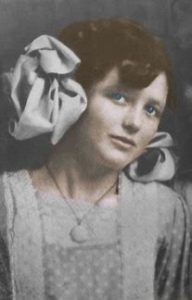
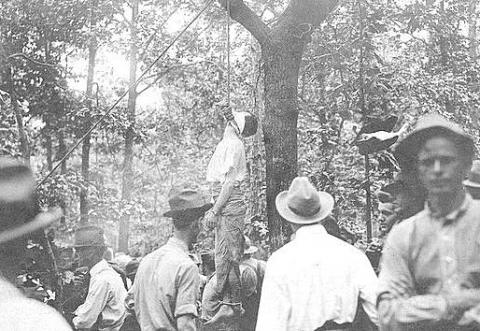
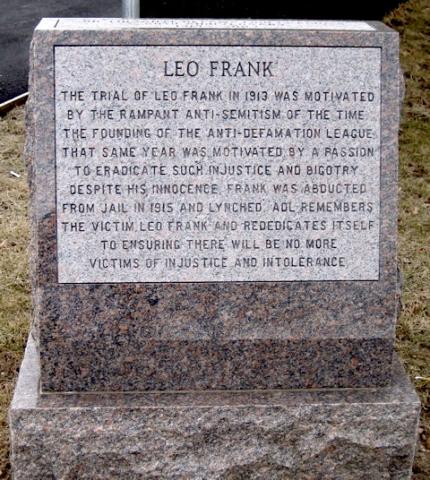

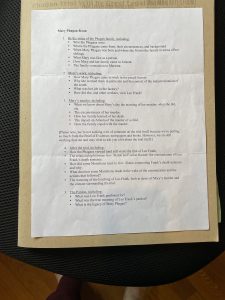
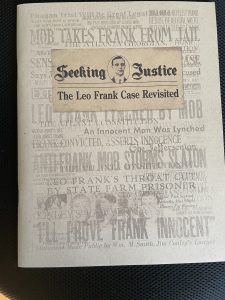
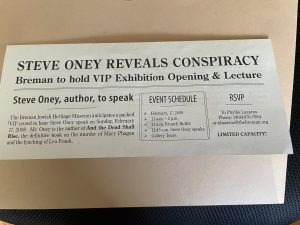
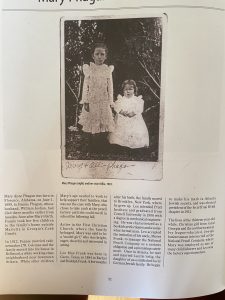
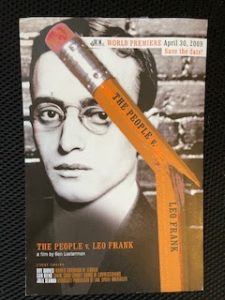
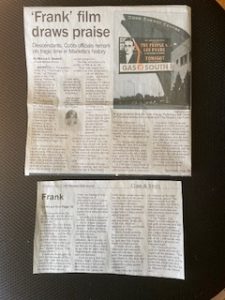

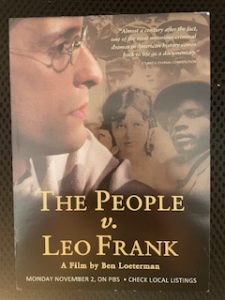
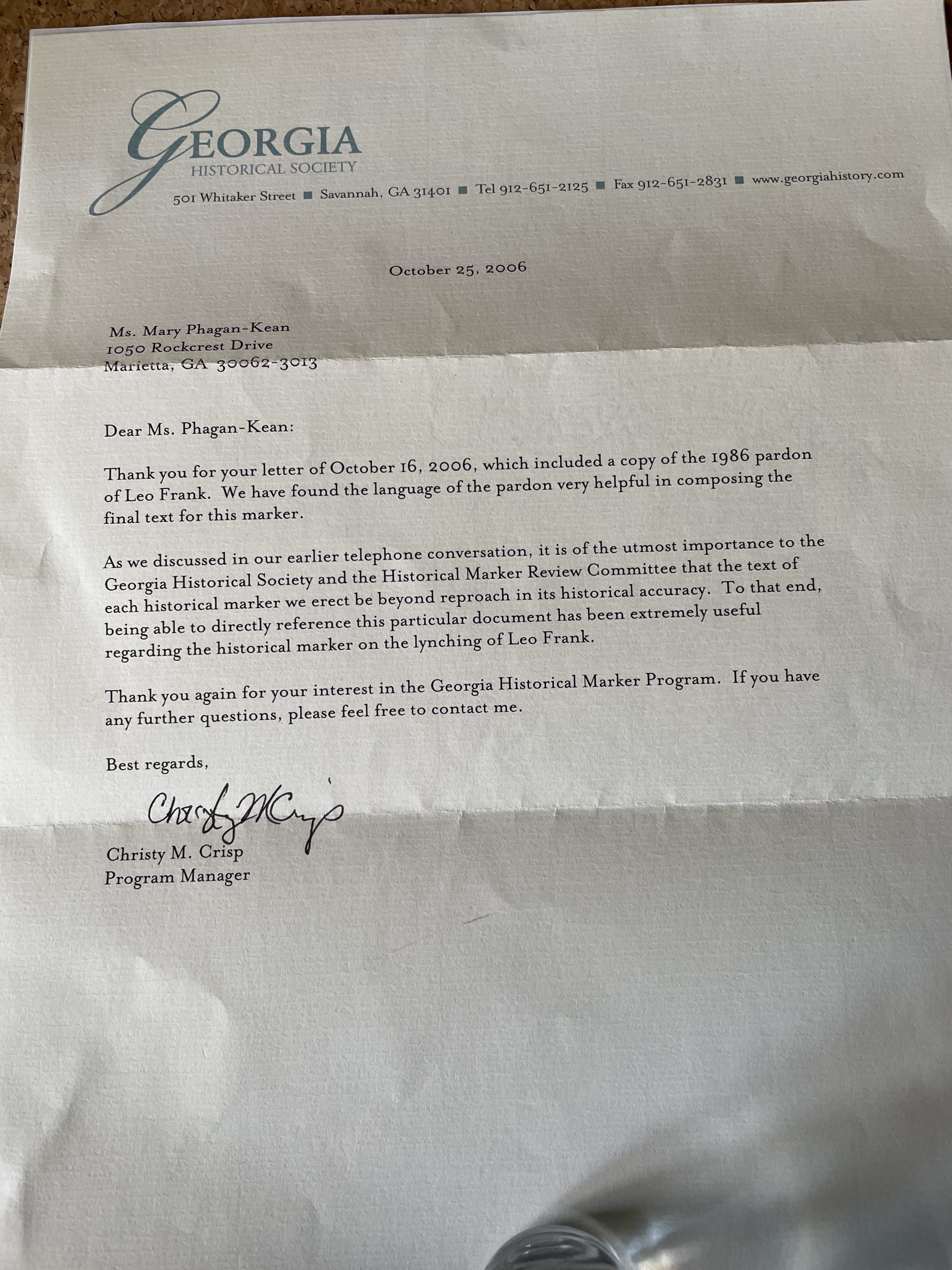
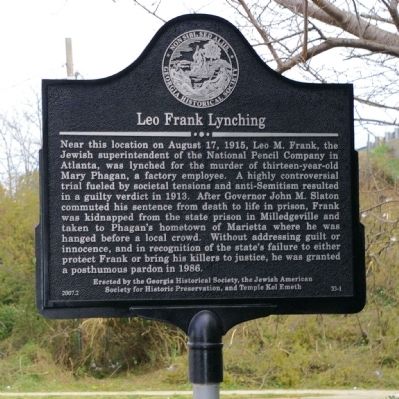
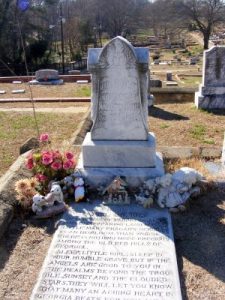
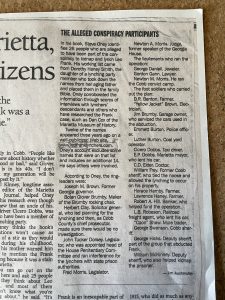
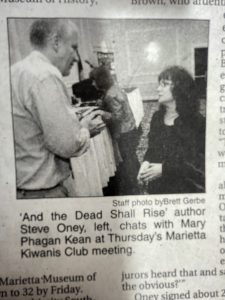
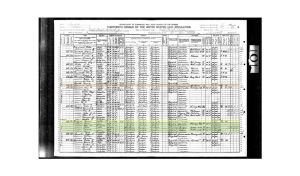
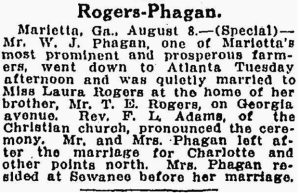
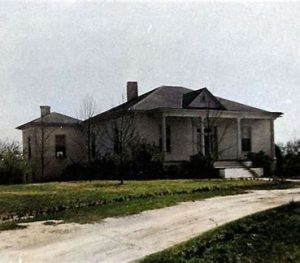
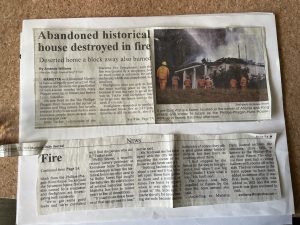 Burned down on October 22, 2005.
Burned down on October 22, 2005.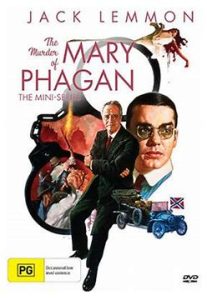 NBC plans Leo Frank miniseries
NBC plans Leo Frank miniseries